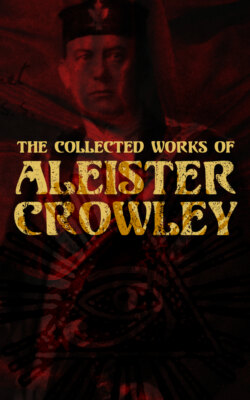Читать книгу The Collected Works of Aleister Crowley - Aleister Crowley - Страница 64
Chapter IV.
The Scourge, the Dagger, and the Chain
ОглавлениеThe Scourge, the Dagger, and the Chain, represent the three alchemical principles of Sulphur, Mercury, and Salt. These are not the substances which we now call by these names; they represent "principles," whose operations chemists have found it more convenient to explain in other ways. But Sulphur represents the energy of things, Mercury their fluidity, Salt their fixity. They are analogous to Fire, Air and Water; but they mean rather more, for they represent something deeper and subtler, and yet more truly active. An almost exact analogy is given by the three Gunas of the Hindus; Sattvas, Rajas, and Tamas. Sattvas is Mercury, equable, calm, clear; Rajas is Sulphur, active, excitable, even fierce; Tamas is Salt, thick, sluggish, heavy, dark.
But Hindu philosophy is so occupied with the main idea that only the Absolute is worth anything, that it tends to consider these Gunas (even Sattvas) as evil. This is a correct view, but only from above; and we prefer, if we are truly wise, to avoid this everlasting wail which characterizes the thought of the Indian peninsula: "Everything is sorrow," etc. Accepting their doctrine of the two phases of the Absolute, we must, if we are to be consistent, class the two phases together, either as good or as bad; if one is good and the other bad we are back again in that duality, to avoid which we invented the Absolute.
The Christian idea that sin was worth while because salvation was so much more worth while, that redemption is so splendid that innocence was well lost, is more satisfactory. St. Paul says: "Where sin abounded, there did grace much more abound. Then shall we do evil that good may come? God forbid." But (clearly!) it is exactly what God Himself did, or why did He create Satan with the germ of his "fall" in him?
Instead of condemning the three qualities outright, we should consider them as parts of a sacrament. This particular aspect of the Scourge, the Dagger, and the Chain, suggests the sacrament of penance.
The Scourge is Sulphur: its application excites our sluggish natures; and it may further be used as an instrument of correction, to castigate rebellious volitions. It is applied to the Nephesh, the Animal Soul, the natural desires.
The Dagger is Mercury: it is used to calm too great heat, by the letting of blood; and it is this weapon which is plunged into the side or heart of the Magician to fill the Holy Cup. Those faculties which come between the appetites and the reason are thus dealt with.
The Chain is Salt: it serves to bind the wandering thoughts; and for this reason is placed about the neck of the Magician, where Daath is situated.
These instruments also remind us of pain, death, and bondage. Students of the gospel will recollect that in the martyrdom of Christ these three were used, the dagger being replaced by the nails.30
The Scourge should be made with a handle of iron; the lash is composed of nine strands of fine copper wire, in each of which are twisted small pieces of lead. Iron represents severity, copper love, and lead austerity.
The Dagger is made of steel inlaid with gold; and the hilt is also golden.
The chain is made of soft iron. It has 333 links.31
It is now evident why these weapons are grouped around the phial of clear crystal in which is kept the Holy Oil.
The Scourge keeps the aspiration keen: the Dagger expresses the determination to sacrifice all; and the Chain restricts any wandering.
We may now consider the Holy Oil itself.
